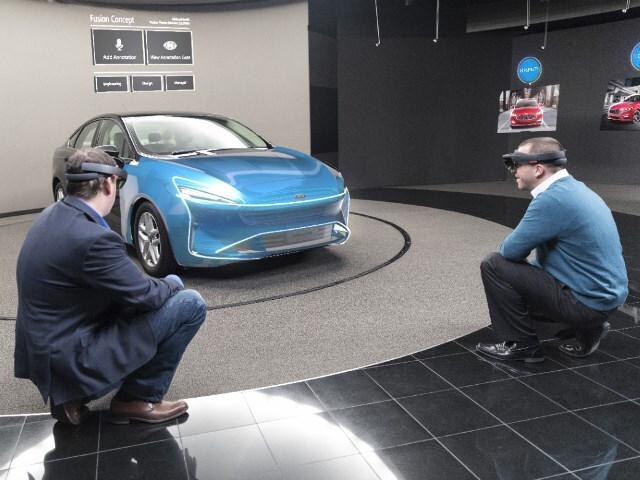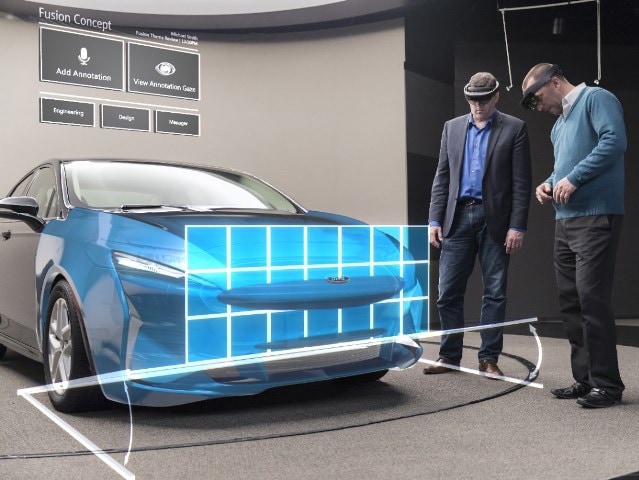We’ve grown accustomed to the belief that what you see is what you get, but in the evolving world of Ford design, that’s not necessarily true. At Ford styling reviews it’s more like what you see is what could be — or it could be this, or this, as a presenter gestures, and elements of the potential design instantly change.
Adding another layer of collaboration to its relationship with Ford Motor Company, Microsoft has developed a holographic system that allows corporate design staffers worldwide to participate in styling reviews in real time.
It’s called the Microsoft HoloLens, a headset that allows participants to see several design variations laid over an existing surface. For example, design staffers can look at several iterations of a side mirror that show not only its shape but the breadth of the area it covers behind and to the side of the vehicle.
Mixed Reality Paradigm
Ford and Microsoft have been working with the HoloLens system for over a year, and characterize its significance as lying between physical reality and virtual reality. Microsoft calls it “mixed reality.”
Wearing the HoloLens headgear, participants can not only view different design iterations, they can walk around the property that functions as the physical element of the presentation, essentially a digital movie screen for the various displays. Participants can alter what they’re seeing by reaching out into the holographic image and pinching the portion highlighted by the system’s projected hotspot.
Viewed from the outside, this can make for some zany meetings, with a roomful of headset-wearing designers moving around a property and pinching the air. But Ford believes the HoloLens can result in significant reductions in design development time, particularly when the design is global.
Worldwide Reviews
A HoloLens design meeting can involve all 10 of Ford’s global design centers simultaneously, in what the company characterizes as “immersive reviews.” And the design potential goes beyond surfaces to engineering issues.
Microsoft’s HoloLens program isn’t confined to automotive applications. It extends to other disciplines as well, such as for medical purposes.
The headsets are a little more expensive than the 3D glasses handed out for movies. HoloLens “development editions,” such as those in use by Ford, go for $3,000 apiece. Commercial editions, essentially over the counter, are $5,000.
Ford hastens to reassure its clay modelers that they won’t be marginalized by the new technology. Not yet, anyway. But their models won’t have to be nearly as finished as in the past, since the HoloLens projections don’t need smooth surfaces for their use.
So in the new world of mixed reality, what you see may not be there at all.









